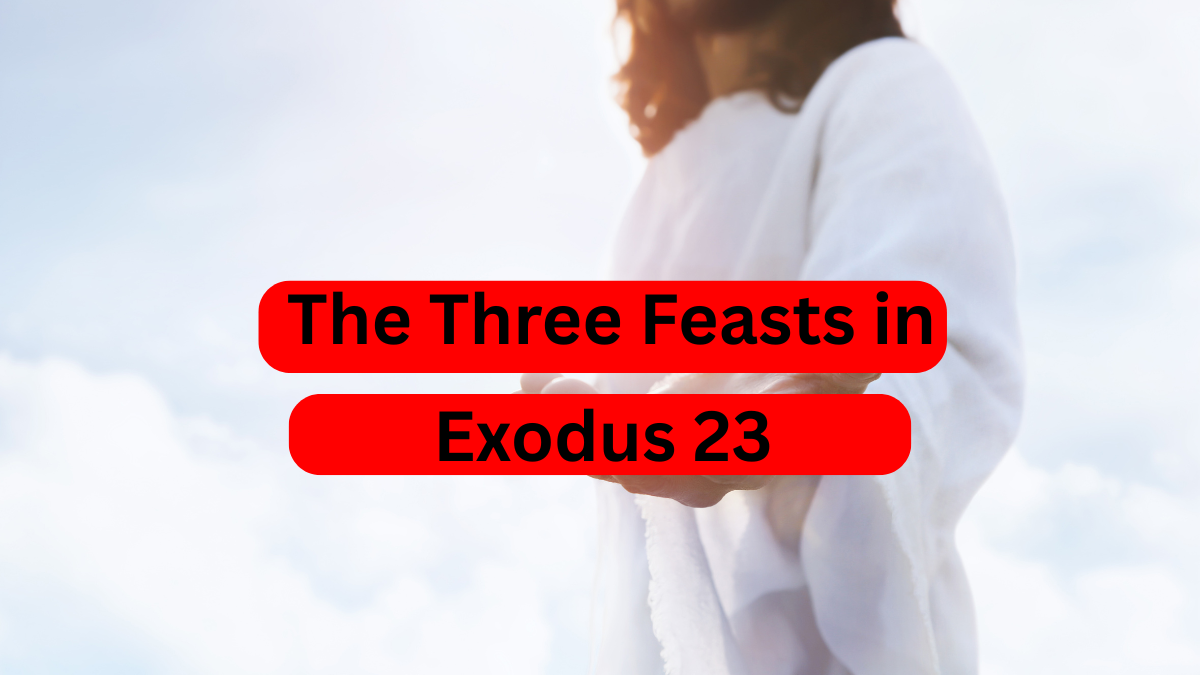In the book of Exodus, the Israelites are given a set of laws that define their relationship with God and the practices that will shape their community. Among these laws, Exodus 23 lays out several instructions regarding the three major feasts, which were not only religious observances but also times of celebration, reflection, and community gathering. These feasts were integral to the Israelite identity and their connection with God.
1. The Feast of Unleavened Bread (Passover)
Exodus 23:15 says: "Celebrate the Festival of Unleavened Bread; for seven days eat bread made without yeast, as I commanded you. Do this at the appointed time in the month of Aviv, for in that month you came out of Egypt. No one is to appear before me empty-handed."
The Feast of Unleavened Bread is closely tied to the Passover, a commemoration of the Israelites’ deliverance from slavery in Egypt. The event marks the night when the angel of death passed over the homes of the Israelites, sparing their firstborns, while striking down the firstborns of Egypt.
The instructions regarding unleavened bread are significant because, in the rush to leave Egypt, the Israelites didn’t have time for their bread to rise. Thus, the unleavened bread became a symbol of their quick departure and God’s deliverance. For seven days, Israelites were to eat unleavened bread, as a way of remembering their hasty escape from Egypt and the hardships they endured. This was a time for reflection, remembrance, and gratitude for God’s salvation.
Key aspects of this feast:
- Timing: Celebrated in the first month of the Hebrew calendar, known as Aviv (now called Nisan).
- Duration: The feast lasts for seven days, with the first and last days being sacred occasions.
- Sacrifice: The Israelites were commanded to bring offerings to God during this feast.
2. The Feast of Harvest (The Feast of Weeks or Shavuot)
Exodus 23:16 says: "Celebrate the Festival of Harvest with the firstfruits of the crops you sow in your field. Celebrate the Festival of Ingathering at the end of the year when you gather in your crops from the field."
The Feast of Harvest, also known as the Feast of Weeks (or Shavuot in Hebrew), occurs seven weeks (50 days) after Passover. This feast was a time for the Israelites to bring the firstfruits of their harvest to God, as an offering of gratitude and acknowledgment of His provision.
This feast symbolized more than just the agricultural aspect of their lives. It was a time to honor God for the bounty He had provided and to remember that all the good things in life come from Him. In the New Testament, Shavuot becomes particularly significant because it marks the day of Pentecost, when the Holy Spirit descended upon the disciples, as described in Acts 2.
Key aspects of this feast:
- Timing: Celebrated seven weeks after Passover (50 days), typically in late spring or early summer.
- Offerings: Israelites were to bring the firstfruits of their harvest as offerings to God.
- Significance: Acknowledging God’s provision and celebrating the beginning of the grain harvest.
3. The Feast of Ingathering (The Feast of Tabernacles or Sukkot)
Exodus 23:16 says: "Celebrate the Festival of Ingathering at the end of the year when you gather in your crops from the field."
The Feast of Ingathering, also known as the Feast of Tabernacles (or Sukkot), takes place at the end of the harvest season, typically in the fall. This feast was a time to celebrate the final harvest of the year, especially the gathering of the fruits of the land. It was also a time of thanksgiving for God’s provision and protection throughout the year.
One of the unique features of this feast was that the Israelites were commanded to live in temporary shelters or booths (sukkahs) made from branches and leaves, to remember their time in the wilderness after leaving Egypt. These shelters were symbolic of their dependence on God during their 40 years of wandering.
The Feast of Ingathering was a joyous occasion, marked by sacrifices, feasting, and singing. It was also a time for Israel to come together in community and celebrate God’s faithfulness.
Key aspects of this feast:
- Timing: Celebrated at the end of the harvest season, typically in the fall (around the month of Tishrei).
- Duration: Lasted for seven days, with the eighth day being a special sacred assembly (Shemini Atzeret).
- Symbolism: Living in temporary booths symbolized Israel’s time in the wilderness and their dependence on God.
Significance of the Three Feasts in Exodus 23
These three feasts are not only religious observances; they serve as reminders of God’s provision, protection, and deliverance. The Israelites were called to celebrate these feasts at specific times of the year, to mark key moments in their history and relationship with God:
- Passover/Unleavened Bread: A reminder of God’s deliverance from slavery and His protection during the Exodus.
- Shavuot (Feast of Harvest): Acknowledging God’s provision and the beginning of the harvest season.
- Sukkot (Feast of Ingathering): A celebration of the final harvest and a reminder of the Israelites’ dependence on God during their time in the wilderness.
In all these feasts, there was a deep emphasis on community. Each one was not just a private religious observance but a public event in which the people of Israel gathered together to honor God. It was also a time to rest from labor and focus on spiritual matters, enhancing the bond between God and His people.
For modern readers, these feasts also hold rich theological significance. They point to God’s ongoing faithfulness and remind believers of the importance of remembering God’s work in their lives through both joy and hardship. Whether through acts of gratitude, acknowledging His provision, or trusting in His promises, these feasts continue to teach lessons about living in dependence on God, both for the Israelites in the past and for believers today.

